Cobra Vs. Camaro: A Brief Recap Of The Modern Era

As a child, I was told that it was impolite to mention religion or politics at the dinner table, because such discussions tended to elicit irreconcilable differences between guests who would otherwise be perfectly compatible. Many years later, as an itinerant observer of the Midwestern street racing scene, I learned that there was a dinner topic that combined the worst aspects of religiosity and partisanship in its prospective combatants, and that topic was known to all and sundry as “Ford vs. Chevy”. It’s the third rail of car-guy discourse, and you’ll touch it at your peril. People take this stuff seriously; the bowtie and the blue oval were common tattoos back in the days before every size-12 Millennial female womens-studies graduate and her bewildered, low-testosterone life partner routinely got full ink sleeves as a way to ensure that they were exactly as different as everyone else.
It’s no surprise, then, that when I posted a reasonably popular article on the R&T website about driving a new-in-box 1995 Mustang Cobra R on a racetrack for the first time, my casual use of the phrase “Z28-killer” to describe said 5.8L, 300-horsepower ponycar caused hundreds of Facebook commenters to lose their collective minds. In short order, I was roughly e-Educated on the fourth-gen F-body’s clear and present superiority by people whose collective amnesia regarding things like Optispark wouldn’t be out of place in a Fifties-era Moose Lodge discussion of Executive Order 9066. Some of these people threatened my life. Worse still, they’re wrong. The ’95 Cobra would smoke a stock ’95 Z28 around a road course. Duh.
But that was just one battle in a long ponycar campaign that has raged since before most of us were born, and with additional violence since the “Cobra” name was first put on a Mustang. What follows, therefore, is a highly opinionated recap of this war without end. We’ll pick a winner for each battle, and we’ll skip the Sixties and Seventies – this isn’t Collectible Automobile – starting instead with the Year Of Our Lord 1993.
“The mood is BMW”, C/D enthused regarding the 1993 Cobra, but the mood – and the rear discs, a long-overdue upgrade over the prehistoric drums on the “5.0” GT – didn’t make up for the massive deficit in power and pace between this and the new-for-1993 Camaro Z28. It wasn’t the first Cobra on this platform – that would be the 132-horsepower 1979 Cobra Turbo – and it wasn’t the first “special vehicle” on this platform – that would be the legendary Mustang SVO, also a four-cylinder turbo – but it was the debut vehicle for the re-imagined Special Vehicle Team. Had it arrived in 1992 to face the automatic-only 5.7 Z28, it would have been a superstar. Against the LT1 fourth-gen, however, it was an also-ran. A very limited-production Cobra R added big brakes and bespoke suspension but had no additional power, making it easy meat for the Chevrolet anywhere but the autocross course. Advantage: Camaro
Round Two: 1994 Cobra 5.0 vs. 1994 Z28
The “mod motor” was well established in full-size Fords when the “SN95” Mustangs reached showrooms for the 1994 model year, but the first two years of SN95 production used the beloved five-point-oh for reasons that were never clear to me even though I was an employee of Ford Credit at the time. The Cobra, too, used what was basically a carryover engine from the previous year, mildly bumped to 240 horsepower. It wasn’t enough and the extra weight of the new platform didn’t help at all. C/D confirmed that yet again the Cobra couldn’t run with a stock Z28.
The Cobra R, on the other hand, had the ability to run thirteens in private hands and a suspension that was well beyond anything that General Motors could offer. I enjoyed the heck out of the one I drove last month, I’ll tell you. Still, it cost twice as much as a plain Z28, making it more of a Corvette competitor. Advantage: Camaro
Round Three: 1996 Cobra 32v vs. 1996 Camaro SS
I was a Ford salesman when the 32-valve Cobra appeared. It seemed like the perfect weapon to avenge three years’ worth of humiliation at the hands of the fourth-gen Camaro, and the optional “Mystic” color-flipping paint was just the icing on the cake. (I blush to admit that I wanted a Mystic Cobra so badly back then that I ended up buying a MusicMan JP6 Mystic Dream earlier this year just out of nostalgia for the car.) Unfortunately for Ford fanatics, Chevrolet had the pumped-up SS – and when C/D performed an unusually thorough comparison between it and the Cobra using champion drivers at a drag strip, an SCCA-Solo-II-style autocross course, and Michigan’s Grattan Raceway, the Camaro smoked the Mustang on all three fronts. Oh, the humiliation! But the margin of victory was much closer than it had been in 1994, so if you liked the Mustang’s superior driving position, park-ability, and quality control, you could put the Cobra in your garage and not feel too guilty about it. Advantage: Camaro
Round Four: 2001 New Edge Cobra vs. 2001 Camaro SS LS1
The Mustang was revamped into the so-called “New Edge” for 1999. The Cobra got an independent rear suspension and a 320-horsepower version of the 32v 4.6. Unfortunately for Ford, the engine didn’t make the advertised power and in the resulting kerfluffle the Cobra was discontinued for 2000. When it returned in 2001, it was able to match the Camaro SS in all performance categories despite the Camaro’s upgrade to a Corvette-sourced LS1 aluminum small-block. The price difference was about ten percent in the Chevrolet’s favor, but the addition of IRS emphasized the Mustang’s real-world superiority. A 385-horse big-bore variant, the Cobra R, was priced against the Corvette but couldn’t match it for pace. Advantage: Tie game.
Round Five: 2004 Terminator Cobra vs….
The supercharged SVT Cobra, nicknamed “Terminator” during development, ran a 12.9-second quarter-mile. And it handled, after a fashion. And it looked bad-ass. It was arguably the best Mustang since the original Shelby GT350. The Camaro SS, preparing to depart the market without a successor, had nothing for it. Advantage: Cobra, by a knockout.
Round Six: 2013 Shelby GT500 vs 2013 Camaro ZL1
To my immense dismay, the successor to the Terminator Cobra was badged as a Shelby for reasons of pure and simple marketing. The first iron-block GT500 was a pretty good car and if you’re interested in watching low-res footage of spectator-shoe heel-and-toe you can watch my old video of one at MSR Houston. The 662-horsepower “Trinity” Cobra, however, was a high-water mark in ponycar history, a nearly perfect blend of power and poise and charisma. It impressed me beyond all words – okay, I came up with a few words – and, along with its Boss 302 sibling, put an exclamation point on the end of the retro-Mustang era.
The Camaro ZL1 was the HHR to the Shelby’s PT Cruiser. More refinement, more visual drama, delivery to market about four years after the car that inspired it. Our friends at Car and Driver preferred it to the GT500, citing its superior composure on track and more comfortable ride while sniffing that the Mustang was “over-the-top brutish”. Since that is precisely what is required in a big-bore ponycar, that over-the-top brutality, I have no trouble calling this one Advantage: Cobra.
Round Seven: ?????
What does the future hold for the Cobra vs. Camaro rivalry? Will there be a counterpart to the GT350? Will both manufacturers field another supercharged V-8, or will Chevrolet attempt to build a sort of hybrid of the Z/28 and ZL1 that competes directly with the new Shelby? Will the lighter and smaller 2016 Camaro play the role of Fox-body to the 2015 Mustang’s third-gen Camaro, using a weight and dimensional advantage to capture reviewers’ hearts? I have no crystal ball, but I can offer one piece of advice: Don’t be in a hurry to buy a ponycar, because ever since 1979 there’s always been a better one around the corner.
Unless, that is, you have an order slot for a GT350.
You can go ahead and get that. And if you’d like to see how it compares to a 1995 Cobra R around a racetrack, you know how to reach me, right?

More by Jack Baruth
Latest Car Reviews
Read moreLatest Product Reviews
Read moreRecent Comments
- FreedMike Ah, Chesterfield Mall...my old teenage stomping grounds. Bummer what happened to it, that's for sure.
- MaintenanceCosts Subarus can be durable, but they are going to demand more frequent and expensive regular maintenance than your typical Honda or Toyota. I suspect for a lot of third and fourth owners that means the economic equation favors scrapping them a bit earlier.
- Bd2 Hyundai and Kia have zero problem selling their respective Ioniq and EV models at or above MSRP. EV9 is the top seller in it's segment.
- Redapple2 366,000 miles is no small thing. The owners and the manufacturer: tip o the cap.
- ToolGuy The 6 million residents of Missouri purchase twice as many Tesla vehicles as do the 5 million residents of Alabama. So now you know.

























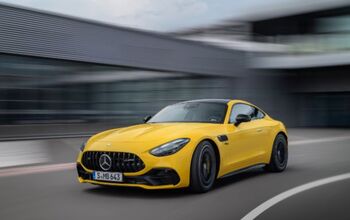
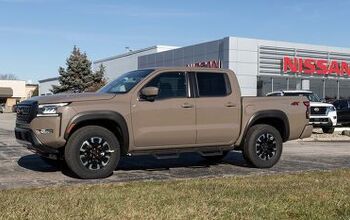
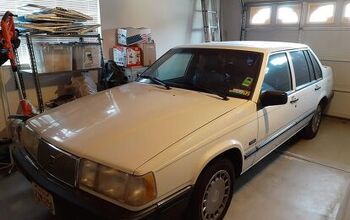
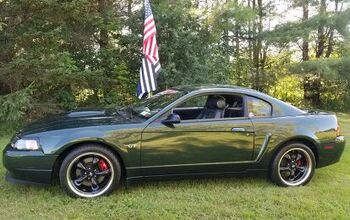

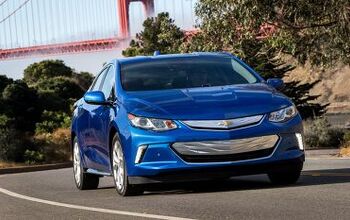
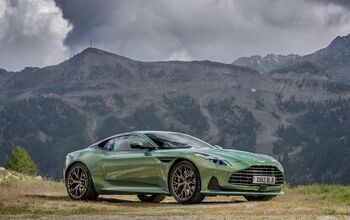
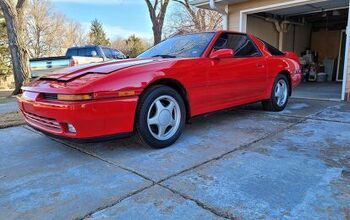
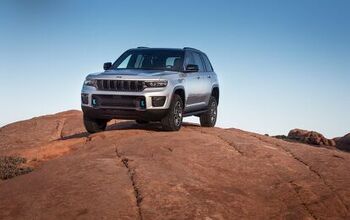
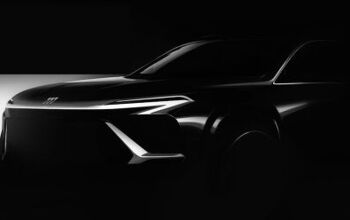

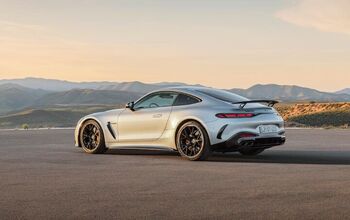

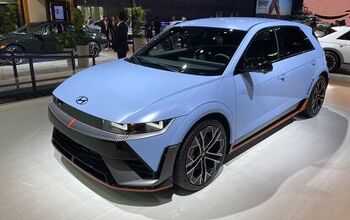


Comments
Join the conversation
Can't beleive how many people are crapping on the 80's and 90's 'F' cars. Were they really that bad? Or did the first generation of owners tend to abuse them? I always thought the 3rd gen F cars were a very clean and fresh design. So maybe the execution was not the best? Trivia Question: Which year 'Mustang COBRA' was powered by a 119 hp V8?
I really like Jack's prose and agree with many of his opinions, but the fapping to most things FoMoCo by both he and Bark gets old. Ford, like most automakers, has some good, okay and bad vehicles, but the okay and bad ones are rarely spoken of by either Maruth brothers, and even the "good" FoMoCo vehicles are hyped beyond reality by them often.